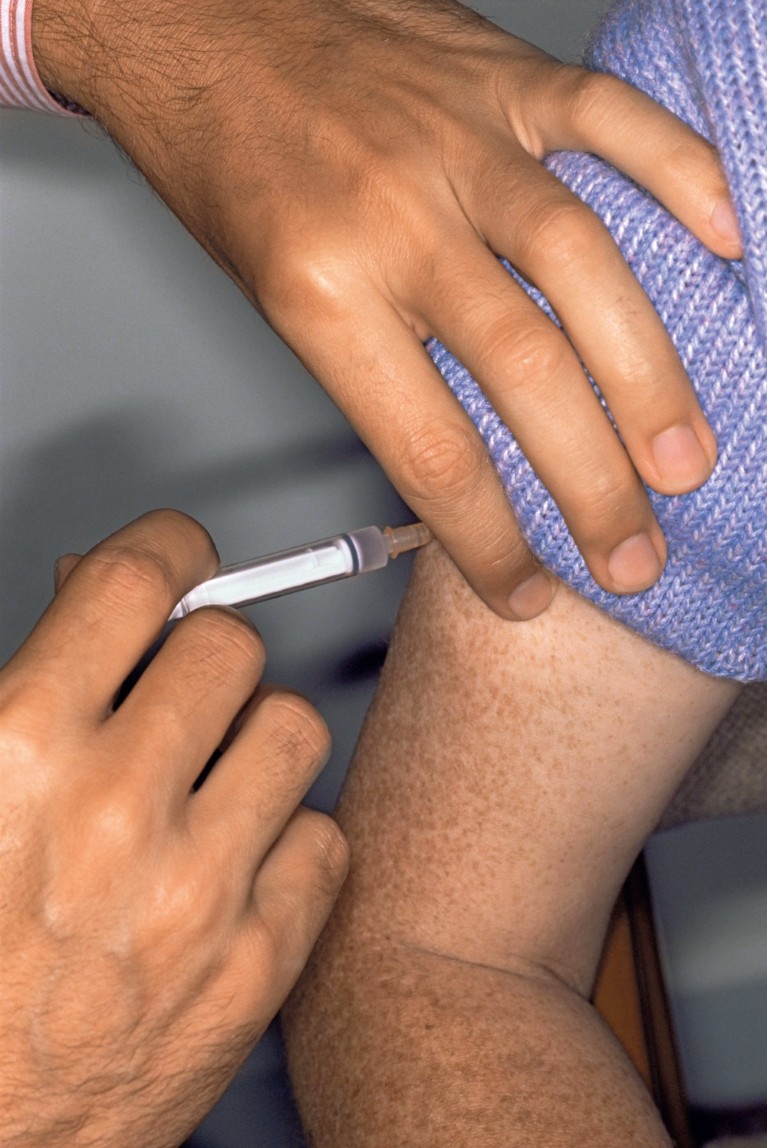
Changing the gene promoter could help make more robust flu vaccines.© WWW.IMAGESOURCE.COM
Experimental vaccines for protection against malaria, influenza and other infectious diseases could be made more potent if their developers made a small genetic tweak.
By using a different ‘promoter’ — a DNA sequence that drives the multiplication and expression of genetic material — researchers, led by Naif Alharbi from King Abdullah International Medical Research Center, have found they can induce stronger immunity in mouse models.
Modified vaccinia virus Ankara (MVA) is a weakened type of poxvirus known to be safe in humans. Scientists have engineered it to carry the genetic material of various infectious agents — including HIV, tuberculosis, and most recently Ebola — into host cells in an effort to prime the immune response against these pathogens.
MVA works well enough as a vaccine carrier, but Alharbi and his colleagues at the University of Oxford’s Jenner Institute wanted to make it even better. They incorporated different naturally found promoters into MVA to see if they prompted a more robust immune response.
In mice, the researchers found that two promoters, known as F11 and B8,improved the expression of foreign genetic material in host cells compared to conventional promoters used in existing vaccines. This elicited a strong immune response. F11 and B8 were more active in the early stages of the MVA lifecycle, leading to higher production yields overall.
The researchers tested the F11 promoter as an enhancing element to drive stronger expression of vaccine proteins from two microbes: malaria and influenza. Two weeks after vaccinating mice with the F11-containing viruses, they observed elevated levels of infection-fighting T cells directed against these pathogens compared to mice immunized with standard vectors already tested in human clinical trials.
“The results show that the F11 promoter induced significantly higher immune responses in mice,” says Alharbi. “[Soon], those improved malaria and influenza vaccine candidates [with the F11 promoter] will be tested in humans by the Jenner Institute scientists [in the UK].”
Alharbi and his collaborator at the Jenner Institute, Sarah Gilbert, have also recently developed a series of vaccines — one of which is based on MVA and includes the F11 promoter — against the coronavirus responsible for Middle East respiratory syndrome, a sometimes-fatal viral illness spread by camels that first appeared in Saudi Arabia in 2012.
“Those vaccines have been tested in mice,” Alhabri says, “and will be tested on camels and humans.”


